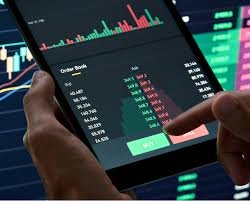
Understanding Crypto Trading Charts: Your Comprehensive Guide to Success
In the ever-evolving world of cryptocurrency, having a firm grasp of Crypto Trading Charts is essential for any trader or investor looking to make informed decisions. These charts serve as visual representations of price movements, allowing traders to analyze trends, spot opportunities, and assess the market’s overall sentiment. In this article, we will dive deep into the different types of crypto trading charts, how to interpret them, and their importance in your trading strategy. Be sure to Crypto Trading Charts visit website for additional resources as you navigate the exciting world of crypto trading.
1. What Are Crypto Trading Charts?
Crypto trading charts are graphical representations of the price movements of cryptocurrencies over specific periods. They display various data points, including opening and closing prices, highs and lows, and trading volume. These charts can provide insights into price trends, helping traders make more informed decisions. The most common types of charts you’ll encounter are line charts, bar charts, and candlestick charts, each offering unique ways to visualize price data.
2. Types of Crypto Trading Charts
2.1 Line Charts
Line charts are the simplest form of price visualization. They plot a single data point for each time interval and connect these points with a continuous line. This type of chart is useful for identifying long-term trends but may overlook significant price fluctuations within the time frame. For example, if you look at a weekly line chart, you can quickly see whether the price has generally increased or decreased over the week.
2.2 Bar Charts
Bar charts provide more detailed information than line charts. Each bar represents the price movement for a specific time period (e.g., an hour, a day). The top of the bar indicates the highest price during that period, and the bottom indicates the lowest price. The horizontal line on the left represents the opening price, while the line on the right shows the closing price. This additional information allows traders to understand market volatility more comprehensively.
2.3 Candlestick Charts
Candlestick charts are among the most popular among traders due to their detailed representation of market movements. Each candlestick displays four important price levels: open, high, low, and close. The body of the candlestick represents the price range between the opening and closing prices, while the wicks (or shadows) indicate the highest and lowest prices during that time frame. Candlestick patterns can indicate market psychology and potential future price movements, making them a valuable tool for traders.
3. How to Read Crypto Trading Charts
Reading crypto trading charts involves understanding the different components and patterns present in the charts. Here are some essential elements to consider:

3.1 Timeframes
The timeframe you choose for your analysis can significantly impact your trading decisions. Short-term traders might focus on 1-minute or 5-minute charts, while long-term investors might analyze daily, weekly, or even monthly charts. Understanding your trading strategy will help you select the appropriate timeframe.
3.2 Support and Resistance Levels
Support and resistance levels are critical in trading. Support is the price level at which a cryptocurrency tends to stop falling and may rebound. Resistance is the opposite, representing the price at which an asset typically stops rising and may reverse. Identifying these levels on charts can help you make decisions about when to enter or exit trades.
3.3 Chart Patterns
Many patterns, such as head and shoulders, flags, and triangles, can provide insight into potential market movements. Recognizing these patterns can help traders predict future price actions based on historical behavior, enabling more informed trading strategies.
4. The Importance of Indicators in Crypto Trading
Indicators are crucial tools that add additional layers of analysis to trading charts. They can help confirm trends, identify potential reversals, and enhance decision-making processes. Here are some widely used indicators:
4.1 Moving Averages
Moving averages smooth out price data over a specific period, helping traders identify trends. The Simple Moving Average (SMA) and the Exponential Moving Average (EMA) are two common types, each serving different purposes and strategies.
4.2 Relative Strength Index (RSI)
The RSI is a momentum oscillator that measures the speed and change of price movements. It ranges from 0 to 100 and is typically used to identify overbought or oversold conditions in a market.

4.3 Volume Indicators
Analyzing trading volume can provide insight into the strength of a price movement. High volume during a price rise indicates strong buying interest, while high volume during a price drop suggests strong selling pressure.
5. Building Your Trading Strategy
With a solid understanding of crypto trading charts, it’s vital to develop a strategy tailored to your goals and risk tolerance. Here are some considerations:
5.1 Define Your Goals
Establishing clear trading goals, whether they involve short-term profits or long-term investments, will guide your chart analysis and decision-making process.
5.2 Risk Management
Understanding risk is crucial in trading. Implementing stop-loss orders and diversifying your portfolio can help mitigate losses and protect your capital.
5.3 Continuous Learning
The crypto market is dynamic and constantly evolving. Stay updated on market news, emerging technologies, and new trading strategies to enhance your trading skills continually.
Conclusion
Mastering crypto trading charts is an essential component of successful trading. By understanding the various chart types, learning to read them effectively, and integrating indicators into your analysis, you can make informed trading decisions. Whether you’re a beginner or an experienced trader, continuously refining your skills and adapting to market changes will enhance your odds of success in the dynamic world of cryptocurrency.